
8 minute read
Simmental data vital to beef improvement
What do Google, Amazon, Facebook and IGS Have in Common? Data is their lifeblood
by Jackie Atkins, Ph.D., Director of Science and Education, American Simmental Association
International Genetic Solutions (IGS) partner organizations, representing 18.9 million beef cattle, gathered in Bozeman on October 22-24, 2019, for a meeting of the minds. Thirty guests including executive vice presidents, breed improvement staff and consultants, and the IGS Science Team, participated in meetings filled with bigpicture discussions of the power of the IGS collaborative, ideas on how to continue to improve data collection and integration into the genetic evaluation, new ways to benefit from economies of scale within this group and technical updates on the genetic evaluation. Ample time for brainstorming during the meetings led to tangible action items for future developments. Topics included:
• The “why” behind IGS by Dr. Wade Shafer • Advice to IGS and its partners for continued success by Dr. Matt Spangler • Updates to the Genetic Evaluation since the first launch of IGS Multi-breed Genetic Evaluation powered by BOLT by Dr. Lauren Hyde • New improvements and developments in genomics by Dr. Mahdi Saatchi • Updates to growth trait predictions by Dr. Bruce Golden • New bull lookup features by Ryan Boldt • Educational awareness efforts for foot/leg assessment by Ryan Boldt Wade Shafer gave a compelling presentation starting with a video of Simon Sinek’s TED talk entitled, “How Great Leaders Inspire Action.” Sinek is the author of the
book “Start with Why” about how successful companies build their business by starting with the “why” behind what they do instead of the “what.” Sinek talks about “the Golden Circle” with “why” as the bullseye, followed by “how” and the “what” is the outermost circle. Successful leaders and companies start in the center of the circle with “why,” then “how” and finally “what.” Shafer extrapolated the golden circle principle for IGS. The “why”=Better serve the beef industry by more effectively leveraging our resource for genetic improvement. The “how”=Leveraging data and technology through massive and unprecedented collaboration. The “what” =The largest and most powerful beef cattle genetic evaluation in the world.
Shafer talked about an article in the May, 6, 2017, issue of The Economist about data being the world’s most valuable resource. Google, Amazon, Apple, Facebook and Microsoft all have something in common with IGS. Data is our lifeblood. The IGS collaboration now has 18.9 million animals and over 230,000 genotypes from 17 different organizations. Not only is it the largest beef cattle database, but it also has a large amount of connectivity among the different organizations. Shafer shared a table of sires (see table on page 30) with progeny from more than one data source. IGS has more than 30,000 sires represented in at least two different databases and nearly 6 million progeny records from these sires. ...CONTINUED ON PAGE 30
NO LIGHTWEIGHTS
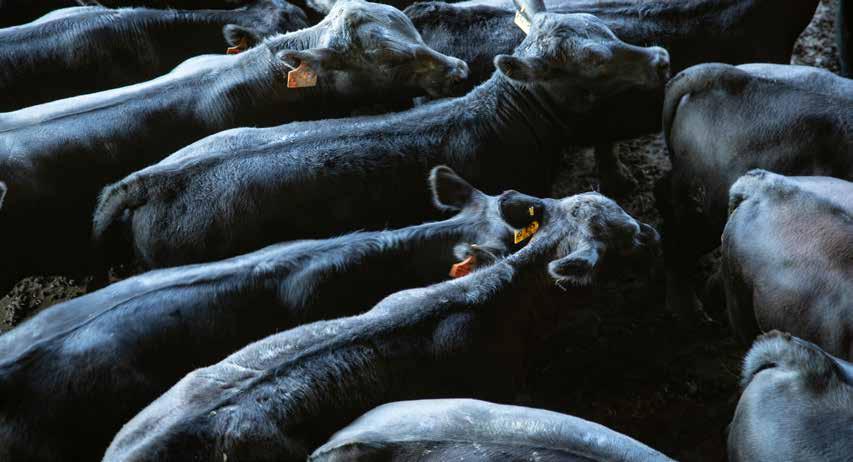
Simmental calves are champions of the scale.
They reliably outperform straightbred calves in the feedyard – with better growth, better structure and fewer health problems.
They add pounds without sacrificing marbling, and they earn more with the IGS Feeder Profit Calculator, ™ which factors genetics, health and management into true value.
STAND STRONG SIMMENTAL
...CONTINUED FROM PAGE 28
Three of these sires show up in 12 databases. This perfectly illustrates the power in pooling this information into one genetic evaluation and gaining the benefit of all that information instead of each association only using their own records.
Another way to illustrate the value of collaboration can be seen in this graphic. The total data in the IGS genetic evaluation is vastly more than any single association contributes. By pooling all the information into one genetic evaluation, all associations gain better genetic predictions than any could do alone. The IGS advisory meeting further developed the synergy of sharing and learning from our partners in beef cattle genetic improvement. Talks from the science team, brainstorming among the partners, and bonding over meals proved a valuable and productive time for all. We are excited about what the future holds for this group. SIRES WITH PROGENY FROM MORE THAN ONE DATA SOURCE

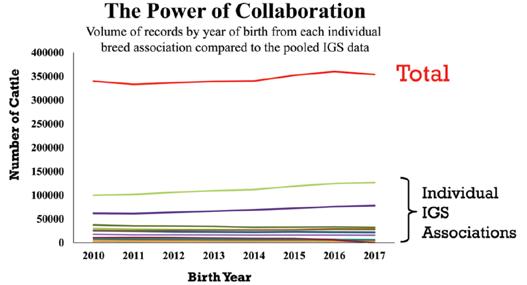

JBSF Logic ACLL Fortune PUREBRED The Judge

HPF Quantum Leap CE
WC Night Watch CE
CE
TL Ledger
Cattle Visons offers the best in SimInfluenced genetics 1-866-356-4565 www.cattlevisions.com
Broker
WC Bankroll
One Eyed Jack CE
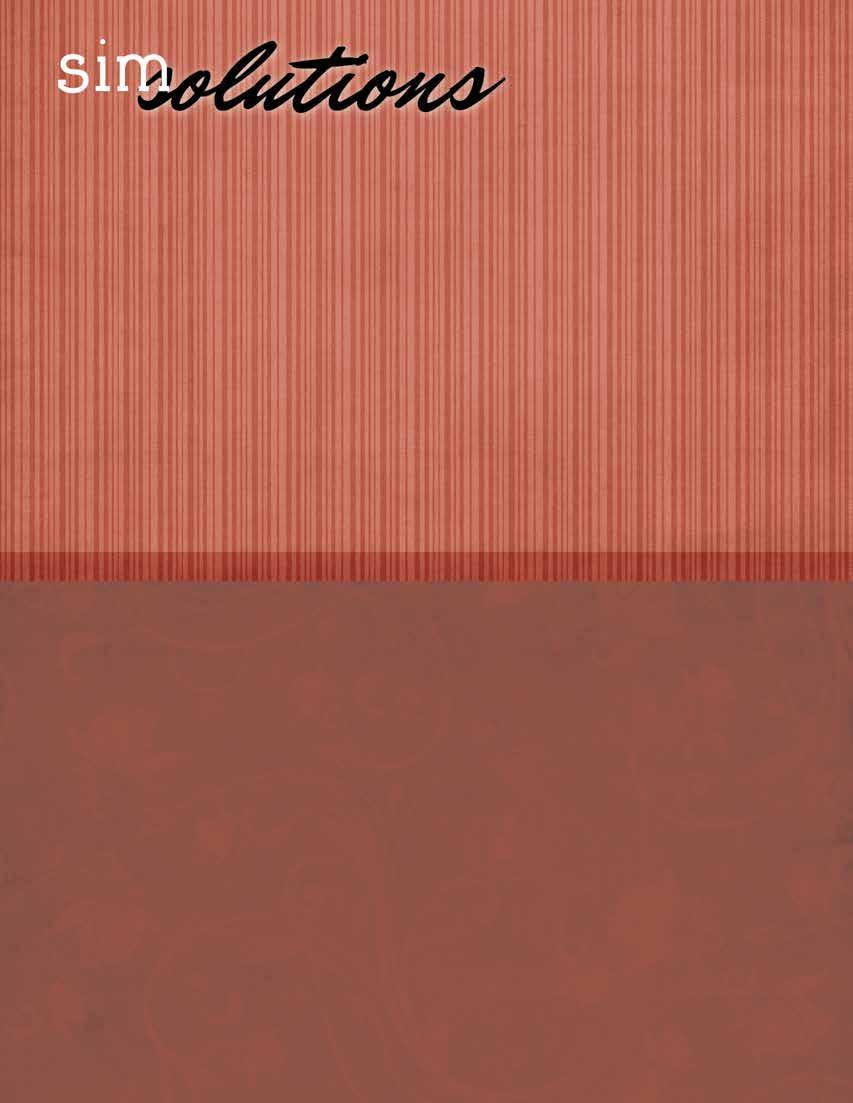
WC Relentless Pay The Price
Meant to Be
S.O.B
CDI Innovator CE
NWSS & NAILE CHAMP
Emmett
Reckoning
Kingsman CE
CE
WC Son of a Biscuit
WC Executive CE
% BULL OF THE YEAR!
The Player
CE
There has been a significant amount of buzz in the industry lately when it comes to structural soundness in genetic evaluation. With workshops educating breeders across the country, multiple presentations happening at national conferences, and articles in countless publications, feet and leg structural evaluation obviously matters to beef producers — seedstock and commercial alike. The American Simmental Association science team has been hard at work developing further understanding of the genetic control of feet and leg structure in beef cattle and encourages members to start thinking about structural evaluation in their own herds. While not new to dairymen, feet and leg structure evaluation is in its relative infancy for the beef industry. Through a research project at Kansas State University funded by the American Simmental Association (ASA), Red Angus Association of America, and the Kansas Global Food Systems Initiative, multiple traits related to feet and leg structure were evaluated and tested in the most comprehensive research project of its kind in beef cattle. Approximately 4,000 animals from both the Red Angus and Simmental breed populations were scored for 14 traits relating to structure. Bob Weaber, Ph.D., professor and extension beef cattle specialist at Kansas State University led the project. “The objectives were to understand the genetic relationships among hoof, leg, and limb angulation attributes — especially any differences between the front and rear limbs. We also wanted to test the granularity of the scoring system to determine information loss using a simple categorical system,” Weaber commented. The study provided insight for ASA and International Genetic Solutions (IGS) breed partners to develop educational material and recommendations for breeders to start evaluating their own herds. Three traits were identified to be issues in the breed population worth exploring further: 1) Claw set and divergence; 2) Hoof angle and heel; 3) Hock angle or rear leg side view. Curvature or divergence in claw set disrupts the surface area on the base of the hoof. This often appears as a scissor or corkscrew claw, where the most severe cases result in one claw growing outward and crossing over the other claw. Cattle often experience shortness of stride and apparent painful movement with this phenotype. Hoof angle and/or heel depth issues can lead to shallowheeled cattle, which can cause toes to grow out and lengthen. Inversely, too much depth of heel results in a rigid hoof and pastern angle, limiting an animal’s flexibility of motion. Though the previously mentioned traits affect hoof conformation, structure issues also manifest themselves in the limbs of cattle, notably the hock and rear leg set. Cattle with extreme straightness are limited in their mobility as are animals that experience over-flexion of the hock joint. FEET AND LEG RECOMMENDATIONS Developing a set of educational guidelines for feet and leg structure for ASA members to better select and evaluate their own animals has been a high priority for the ASA science team. While much of the research regarding the use of feet and leg data in genetic evaluation, as well as structure’s impact on economically-relevant traits is still ongoing, membership can contribute to this research by voluntarily sending any data they collect on three traits: Claw Set, Hoof Angle, and Rear Leg Side View (See Figures. 1–3). Weaber stressed the importance of breeders familiarizing themselves with feet and leg structural evaluation. “Seedstock cattle will continue to be evaluated for a wide range of economically important traits for the foreseeable future. Commercial cattle producers making sizeable investments in genetics are elevating their expectations relative to foot and leg conformation and durability. As such, seedstock producers seeking repeat customers for high-value bulls should strive to breed cattle with foot and leg longevity in mind,” Weaber emphasized. For more information on ASA’s feet and leg scoring, contact the association or go online at www.simmental.org. ASA Launches Feet and Leg Scoring Recommendations FIGURE 1 FIGURE 2 FIGURE 3 Recognizing the importance of sound feet and legs in beef cattle, ASA has designated foot set traits. Displayed here are claw set and divergence, hoof angle and heel, and hock angle rear leg side view.
Red River Farms Your SimAngus & Simmental Source ELITE SIMMENTAL & ANGUS SEEDSTOCK

Offering 40 bulls private treaty via these fall sales: Visalia Bull Sale, Visalia • Sept 27 Famoso Bull Sale, McFarland • Oct. 17 World of Bulls, Galt • Nov. 7
TEX RITA 5553C


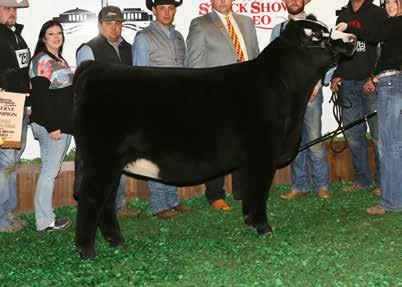
Sire groups include: CCR Anchor 9071B OBCC CMFM Deplorabull SC Pay The Price C11 Rocking P Legendary C918
Offering sons of donor TEX Rita 5553C
Offering full brothers to RRF Rita 215G 3/4 SimAngus Deplorabull x 5553C 2019-2020 ASA PTP Ring of Champions Percentage Heifer of the Year.
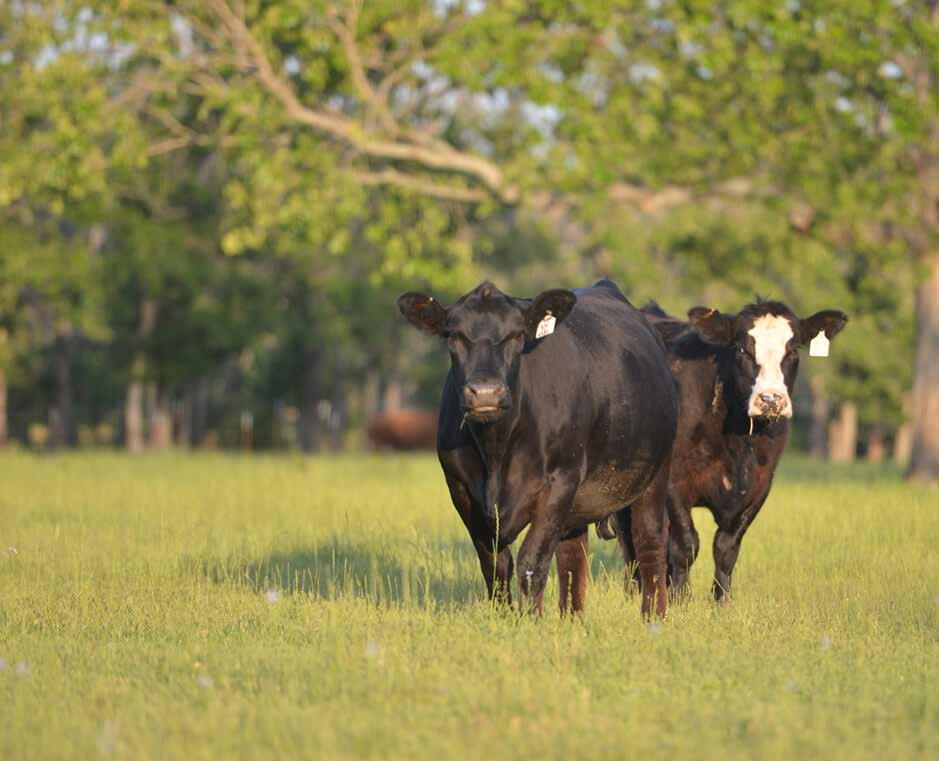
RRF RITA 215G
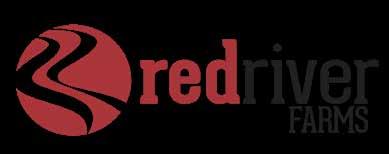
Office: 760.922.2617 Bob Mullion: 760.861.8366 Michael Mullion: 760.464.3906 A.K.Phillips, General Manager, Texas (606) 584-1046 March 2020 California Cattleman 33










